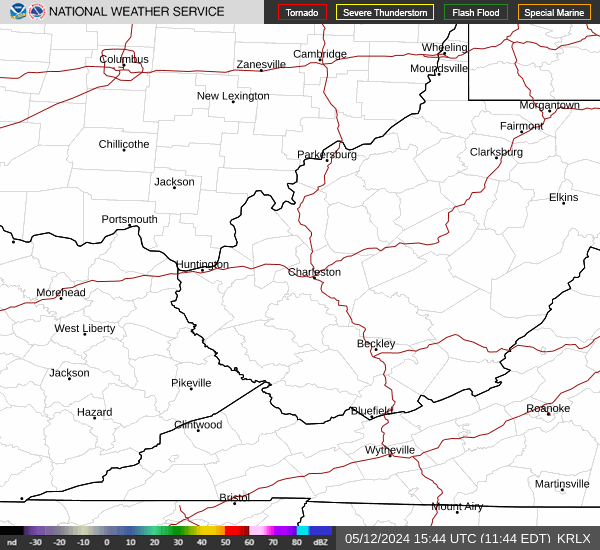Issued: 2pm on Wednesday, August 26th 2020
Technical Forecast Discussion
Short Term (Wednesday 8-26-2020 through Saturday 8-29-2020)
A very complex pattern will hold tough across the state of Ohio in the short term. Strong upper level troughing over the northeast and Canada will force multiple disturbances over the coming days. Wednesday’s disturbance will originate from the right entrance of a strong jet streak located over eastern Manitoba and western Ontario. This will force a frontal boundary (one that pushed through Tuesday) back north and east as a warm front. Weak an increasing VORT axis with height, along with WAA along the front will force (elevated) showers and thunderstorms ahead of the front Wednesday morning into the afternoon. With a very well sheared environment across NE Ohio, thanks to the strong jet streak, along with dry air downdraft entrainment, storms that occur in the afternoon will produce damaging straight line winds. The severe threat with these looks most likely in the far NE portions of the state in Ashtabula County. Behind the front, CAPE profiles both in the mixed layer and at the surface look sufficient at face value (between 1100-1600 j/kg ML, and 1800-2500 j/kg SB). However, with CINH values ~40 j/kg, as well as mainly positive omega (forced by decreasing differential VORT advection, as well as weak CAA at 500 mb), widespread convective initiation behind the warm front appears unlikely. An isolated cell or two will probably initiate this afternoon (mainly south of I-76, where CINH is lowest). In the sheared environment, hail and damaging winds with this will possibly occur, but this threat will be far too isolated to spark wide concern for widespread severe weather. This is the reasoning behind the downgrade from slight to marginal from the SPC today. A better risk of severe weather in Ohio will come Thursday. Accelerating flow out of Minnesota coming into the tighter height gradient will drive a weak VORT max that will set up shop over Lake Huron/the Georgian Bay. This will drive another jet streak, and therefore more cyclogenesis (this time at the left exit). A shallow region of weak increasing differential PVA between 850 and 700 mb, along with slight WAA will allow for negative omega to provide enough forcing (along with the lake breeze) for upward motion. Another possible driver of upward motion will be a weak confluence axis driven by high pressure to the south, and low pressure to the east. Regardless of the mechanism, parcels that begin to rise will encounter a very favorable environment Thursday afternoon. CAMS are agreeing on MLCAPE values between 2300-2500 j/kg going into the afternoon. The extent of CAPE will depend on how well mixed the boundary layer becomes Thursday, as well as the extent of mid level lapse rates. Downdraft entrainment appears likely Thursday with dry mid levels. This will support a widespread damaging wind threat across the entire risk area in N OH. A capping inversion should be in place across much of the slight risk area until about 2 PM. By 4 PM, initiation should begin to occur along the weak confluence boundary. Bulk shear in the middle and upper 20-lower and middle 30 kt (depending on how far NE your location is) range will support 1.) multicell clusters further SW, with bowing segments and mini-supercells NE, and 2.) weak updraft rotation. Effective SRH values nearing 100 later in the day will prevent updraft splitting, and support isolated hail development. With all of this said, damaging winds appear to be the greatest threat, across the entire risk area, with an isolated weak tornado and hail threat with cells that remain discrete long enough (which is possible with a cap and semi-perpendicular shear vectors) east of OH-44 and north of I-76. Monitor the latest forecasts, and have multiple ways to receive warnings in northern Ohio tomorrow. After Thursday’s threat, another threat comes Friday. The remnants of Hurricane Laura will begin phasing with a cyclone that will be generated by yet another Jet Streak. This will be driven as the result of a vort max coming off the Rockies, and gaining strength by conservation of angular momentum. This cyclone should reach southern lower Michigan by 4 PM Friday,and continue to move easterly after. Uncertainty exists regarding destabilization across the warm sector, with MLCAPE of at least 1000 j/kg only reaching far NW Ohio. Dry mid levels will support strong DCAPE (near 1100 j/kg), supporting a damaging wind threat. Mid level lapse rates only near 6°C/km will hinder the hail threat, but bulk shear in the middle and upper 20 kt range, with effective SRH values in the mid 200 range will support hail development, and updraft rotation. An isolated tornado/hail threat will exist with these storms because of this. Storms should come through around 8 PM, with the cold front. Finally, after FROPA, a large scale trough will dig to the south and east due to PVA and increasing differential thickness advection. Increasing differential PVA and weak WAA at 500 mb will provide forcing for scattered showers Saturday morning before clearing begins behind the cold front.
Long Term (Sunday 8-30-2020 through Tuesday 9-1-2020)
Weak omega blocking should take shape by Saturday evening into Sunday morning. Continual weak PVA will continue to keep the region under a toughing pattern through the weekend. Highs should cool way down–into the middle and upper 70s further south, and upper 60s and lower 70s further north. With CAA aloft throughout the day Sunday, precipitation is not likely. NVA, however will build another short-lived ridge across the area on Monday. Highs should reach the lower and middle 80s across the entire state again on Monday. High uncertainty exist regarding the next weather maker. The GFS places a strong VORT max (currently located off the west coast) over southern lower Michigan late Monday into Tuesday. The EURO does not dig this trough south and east. This is due to differences in extent of differential thickness advection over Canada on Saturday afternoon. If strongly increasing differential thickness advection occurs, this feature will dig to the south and east, allowing the low to make it to southern lower Michigan in time. If this occurs, a severe weather threat could be possible Monday into Tuesday. Much more will be known in Sunday’s technical discussion. Be sure to monitor the latest forecasts.




